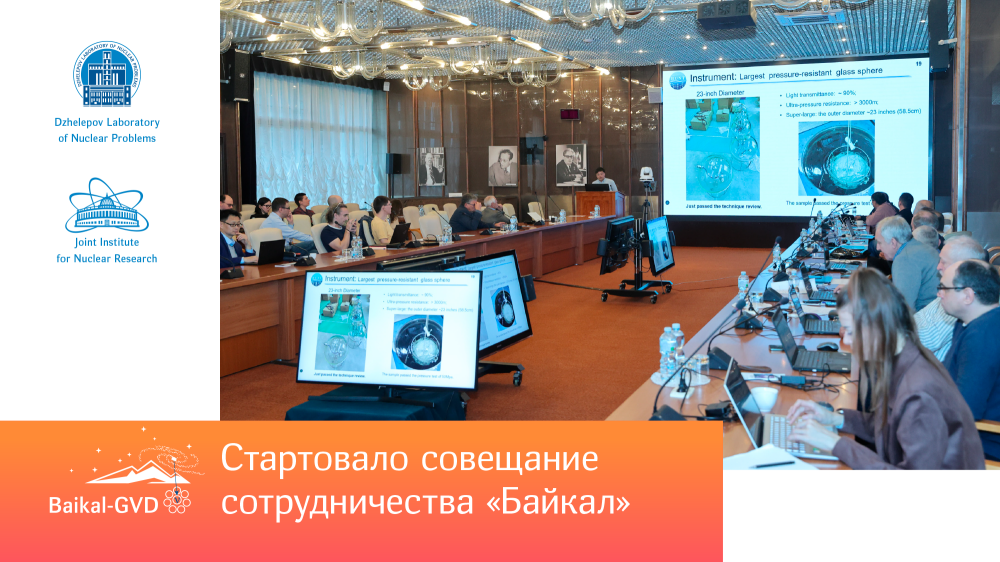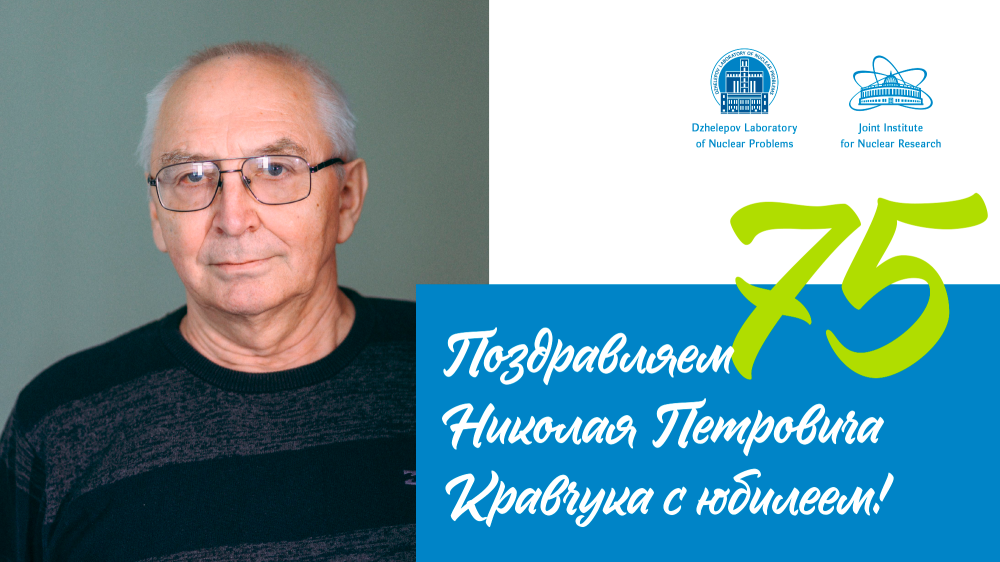Regular Baikal Expedition to Construct the Baikal-GVD Deep Underwater Neutrino Telescope with a Volume of One Cubic Kilometer Has Finished
The Baikal-GVD Neutrino Telescope is designed for detecting and studying high-energy neutrino fluxes from astrophysical sources. Scientists plan to explore the processes of an enormous energy release that took place in the Universe long ago. One of the riddles in contemporary astrophysics is the mechanism of production of the neutrinos milliard times more energetic than solar neutrinos. And the Baikal Neutrino Telescope, due to its exceptional characteristics, can shed light on this mystery.
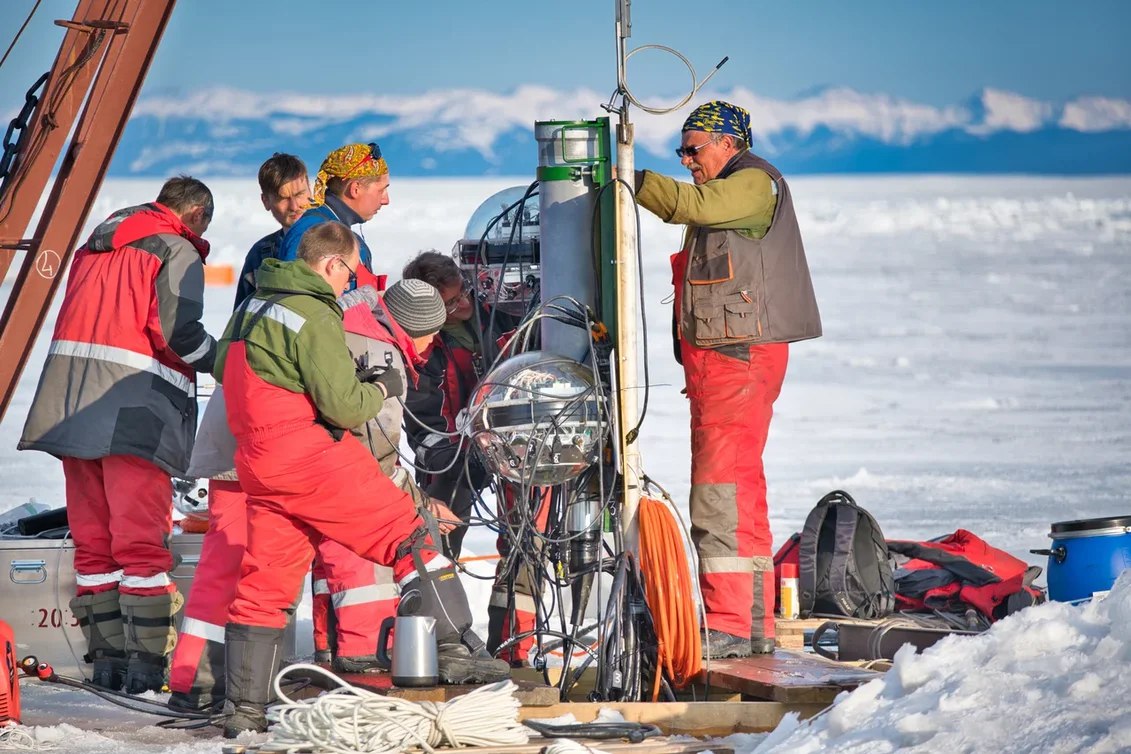
According to the project, the volume of the completed facility in Lake Baikal should be about one cubic kilometer. In 2020, another important step towards this goal was made - two new clusters were installed. The effective volume of the facility for the detection of neutrino showers expanded up to ~ 0.35 cubic kilometer.
“This is a great success of the team from the Institute for Nuclear Research of the Russian Academy of Sciences (INR, RAS, Moscow), the Joint Institute for Nuclear Research (JINR, Dubna) and other members of the Baikal-GVD collaboration. We are going to continue our work and in the near future to finish the construction of the unique neutrino detector. The telescope is already in operation and started taking data. At the same time, it is being built up”, says Director of INR of RAS (Moscow), corresponding member of RAS, Doctor of Physics and Mathematics Leonid Vladimirovich Kravchuk.

Director of JINR (Dubna), Academician of RAS, Doctor of Physics and Mathematics Victor Anatolyevich Matveev adds: “The Baikal-GVD effective volume for the detection of high-energy neutrino showers is now 0.35 km3, which allows expecting the detection and selection of three to four events of this kind during a year. It means we are one or two successful expeditions away from IceCube where the average number of such events is four to six in a year depending on the energy threshold of detection”.
The Baikal Neutrino Telescope being now still under construction is a unique scientific facility and belongs to the Global Neutrino Network (GNN) as one of the most important components in the Earth’s Northern Hemisphere along with the IceCube, ANTARES and KM3NeT telescopes.
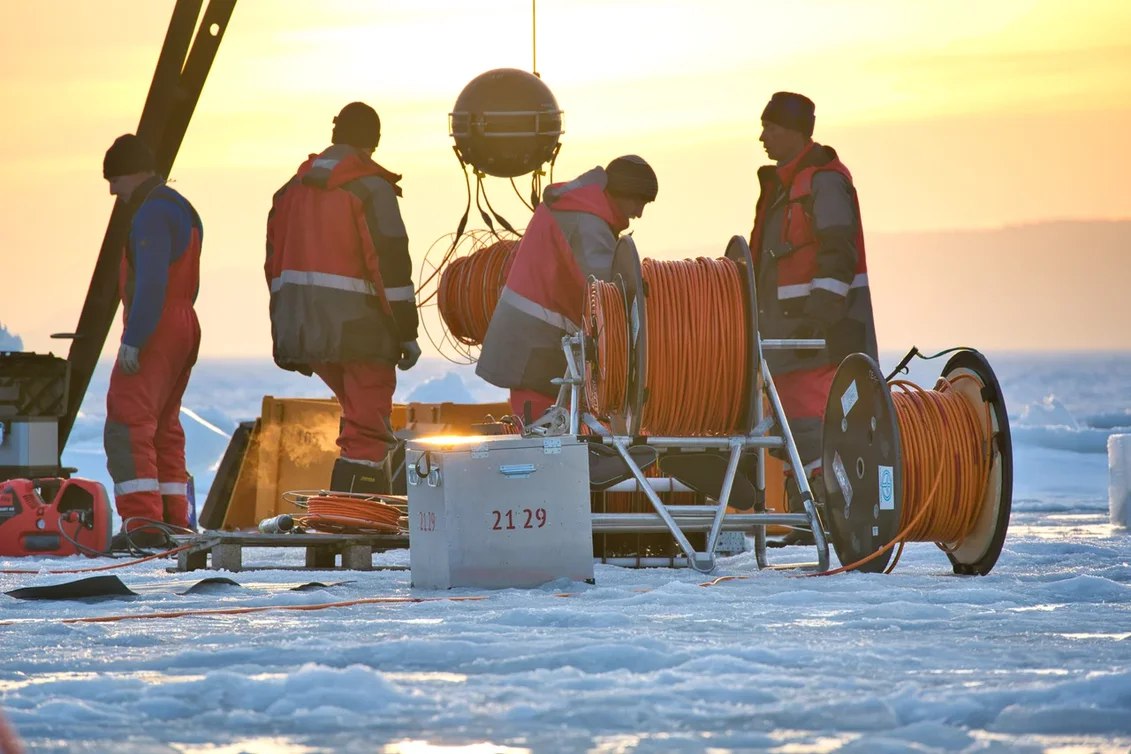
“Such a success in just five years! Unprecedently for contemporary Russian reality not only considering the short span of time and project scale but also fulfillment of the schedule”, notes Doctor of Physics and Mathematics Vadim Aleksandrovich Bednyakov, Director of the Dzhelepov Laboratory of Nuclear Problems of JINR, one of the project members.
The Baikal Neutrino Telescope is installed 3.5 km away from the shore, at the depth of 750−1300 m in the Southern Hollow of Lake Baikal. The facility is usually assembled from the ice, which is a great advantage of the Baikal project compared to other projects where telescopes are mounted from the ships.
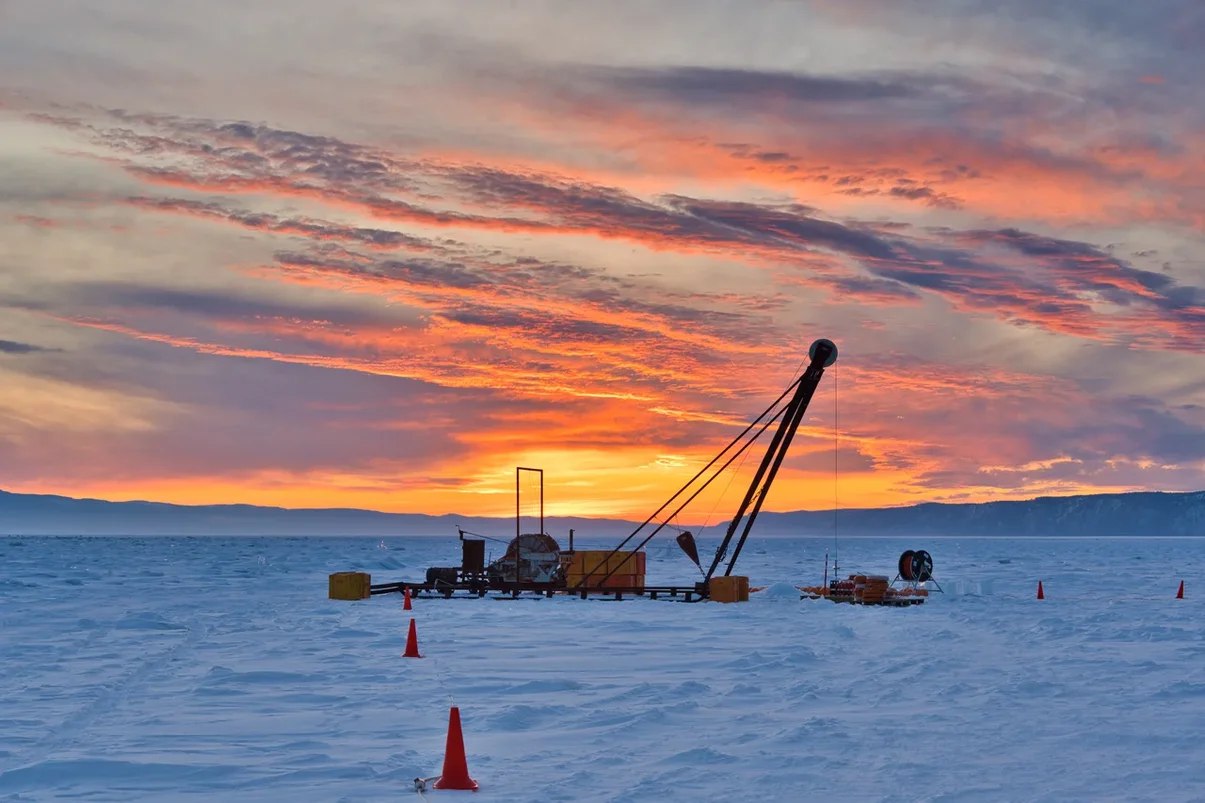
This year, expedition members had to hardly struggle against difficulties that sometimes even put in doubt the fulfillment of the project which tens of researchers have thoroughly worked at over the whole year.
“This year, the expedition worked under extremely anomalous weather conditions. During the ice formation period, a strong wind broke the ice cover of the lake. For that reason, huge ice blocks and ridges grew all across the lake, which enormously impeded the mounting. I cannot remember something like this in the whole 40-year-long Baikal expedition history. And only thanks to great experience and high expertise of expedition participants, the scheduled work could be done in full and on time”, shared Grigory Vladimirovich Domogatsky, Head of the Laboratory of High-Energy Neutrino Astrophysics of INR of RAS, Doctor of Physics and Mathematics, corresponding member of RAS, Chief of the Baikal-GVD collaboration.

“Nature set us a very complicated problem to solve this time,” agrees Acting Head of the expedition Igor Anatolyevich Belolaptikov (JINR, Dubna). “We did not even fully realize how we would be able to cut the ice and deal with all these ice ridges to lay the cables to the new facility. But we found the solution and succeeded!”
Not only the two new clusters but also an experimental technological string with five calibration laser light sources were installed during this expedition. The chosen laser arrangement provides the possibility of calibrating all channels of the cluster. The first test of the laser light sources in their working arrangement within the facility proved their full operational capability.
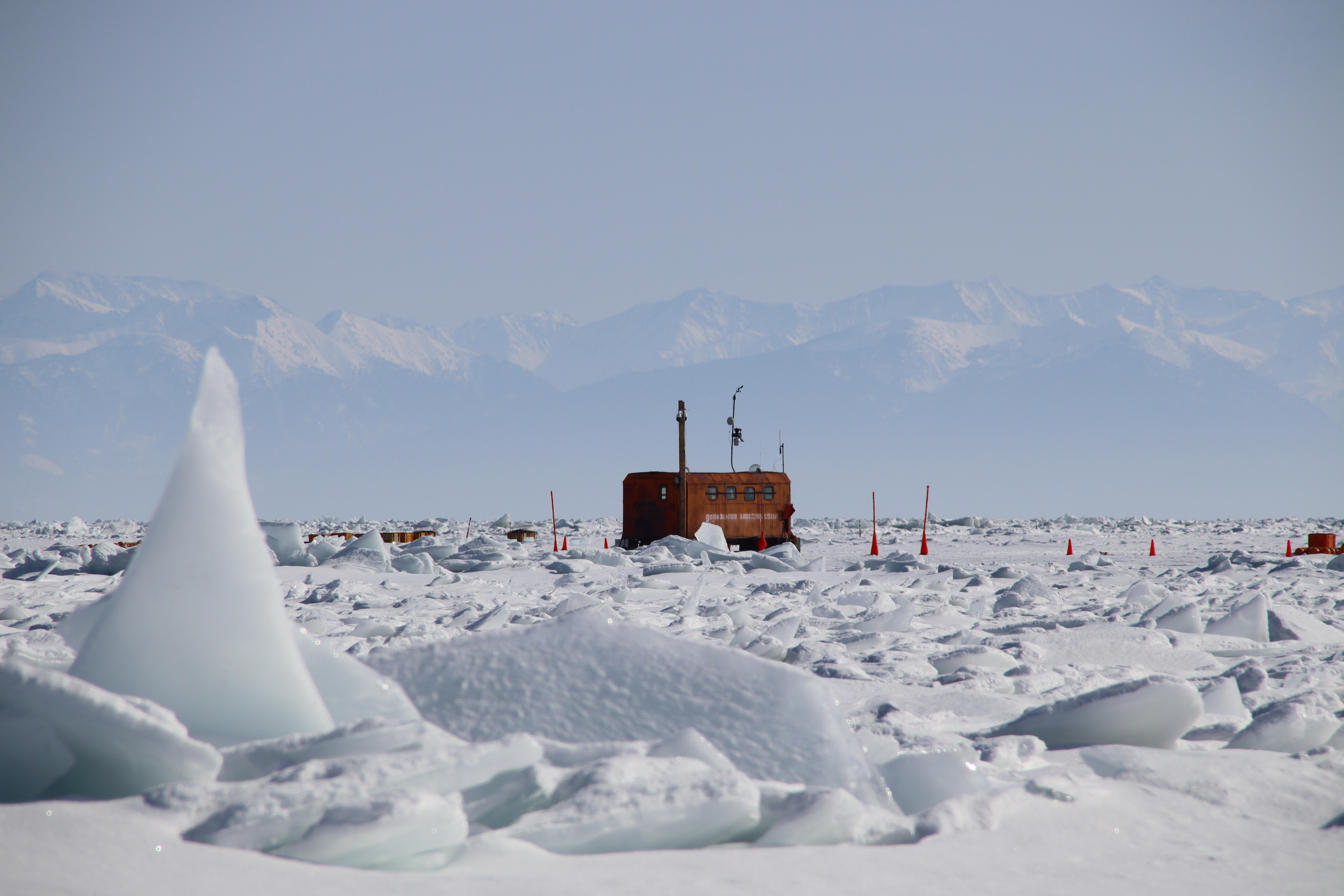
“To increase the efficiency of neutrino detection, an additional experimental string was mounted that uses the underwater fibre-optic cables for data exchange”, says Vladimir Maratovich Ainutdinov, Doctor of Physics and Mathematics, leading researcher of INR of RAS. “Increasing the data transmission capacity and productivity of underwater equipment allows organizing a flexible trigger system targeted at particular physics problems and exploring the possibilities of the immediate online data processing and filtering under water”.
On the whole, 60 researchers, engineers, technicians, workers, including volunteers, participated in the expedition. There were three specialists from foreign institutions among them. The 2020 expedition programme has been fully completed.
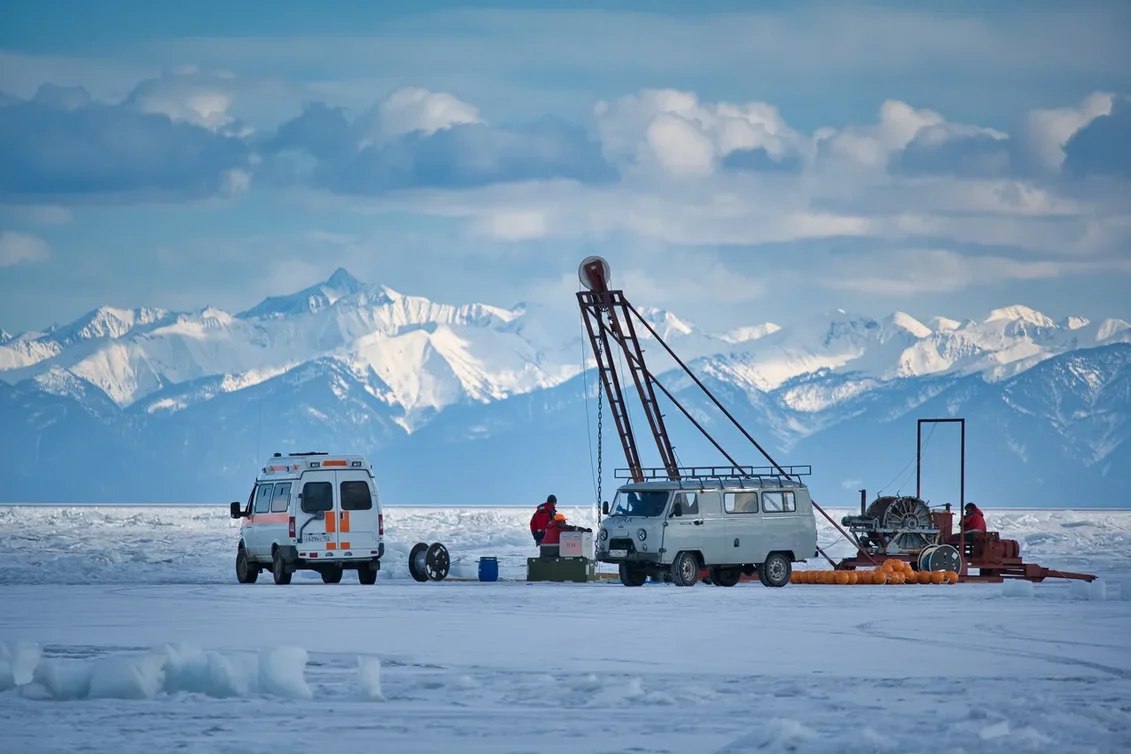
This year, the International Scientific Baikal-GVD Collaboration comprises the Institute for Nuclear Research of RAS (Moscow), the Joint Institute for Nuclear Research (Dubna), Irkutsk State University, Nizhny Novgorod State Technical University, St. Petersburg State Marine Technical University, the Institute of Experimental and Applied Physics of Czech Technical University in Prague, the Faculty of Mathematics, Physics and Informatics of Comenius University in Bratislava (Slovakia), the Institute of Nuclear Physics of the Polish Academy of Sciences (Krakow, Poland), EvoLogics GmbH (Berlin, Germany).
The expedition was organized by the Institute for Nuclear Research of the Russian Academy of Sciences (Moscow) and the Joint Institute for Nuclear Research (Dubna).
Photos by Mikhail Zhukov.
More photos you can find here: {phocagallery view=categories|categoryid=301|imagecategories=0}
More videos you can find here: www.youtube.com




